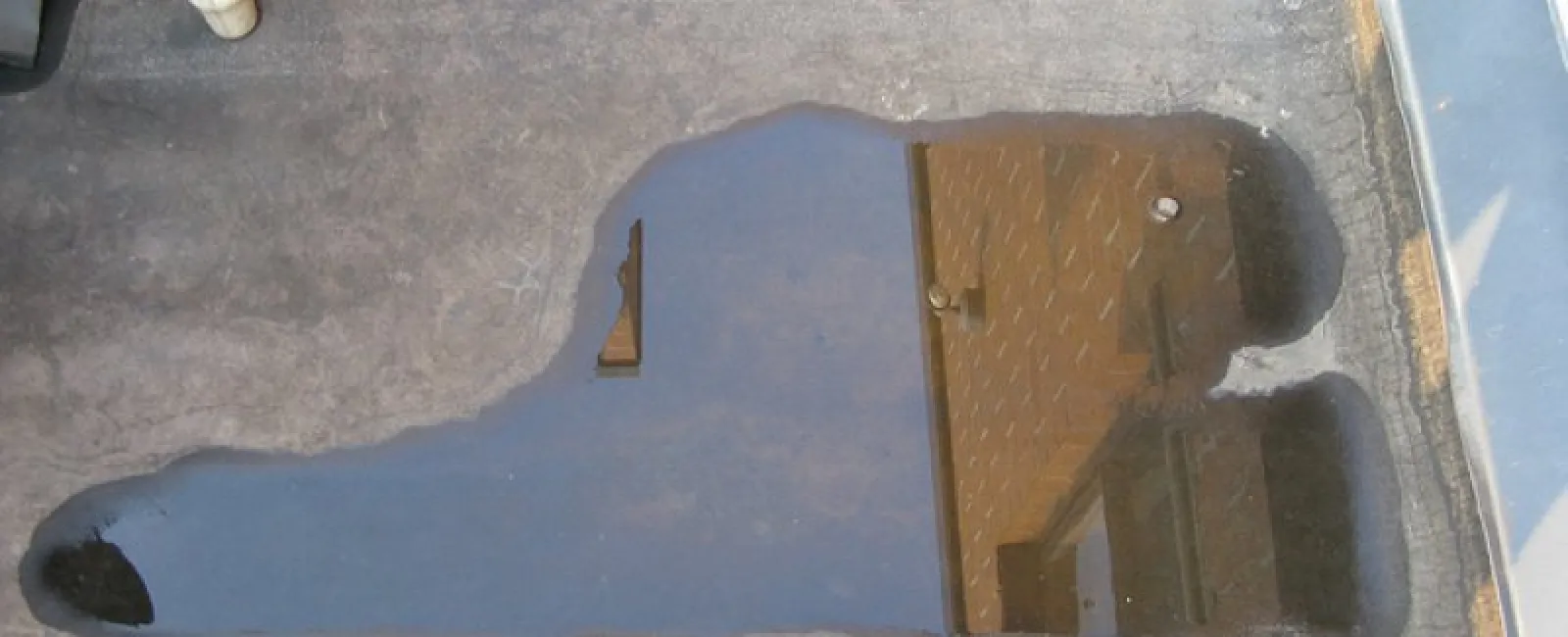What does ponding water look like?
Ponding or standing water refers to water that gathers in a small puddle or pool on the top of your roof. Incidental ponding water is caused by natural events like rainfall. While all rooftops take time to dry off after rain, ponding water will stay on top of a roof for up to two days or longer afterward.
Sometimes ponding water can be difficult to see, because the rooftop obstructs the views necessary to see it. Standing out in the street after rain and looking for reflective patches may be the best way of catching these troublesome puddles. Sometimes ponding water forms in the valleys of a pitched roof. However, it is most common on flat roof sections.
What causes it?
Incidental ponding water is caused by a combination of precipitation and poor roofing choices. A properly designed rooftop will not suffer from these puddles because of proper drainage. For example, when roof valleys meet in a pitched roof, the roof should always be designed to channel the water safely down to the gutters, using gravity to prevent ponding. This is particularly important when building new additions.
Flat rooftops encounter ponding water problems more often because it is harder for them to use gravity to get rid of water. However, a properly designed flat roof with use tapered insulation and other design choices that will keep water from staying on the roof after rain. However, if such methods of drainage become blocked by debris they will lead to future ponding problems.
What damage can ponding water do?
Ponding water is dangerous for a roof for a couple different reasons. First, long-term contact with moisture is bad for any roofing material. It can encourage the growth of moss and mildew, and eventually can seep down and begin rotting away lower roof components over time, causing very expensive, serious damage.
Ponding water can also encourage the corrosion of asphalt and other shingle materials in combination with UV rays from the sun. This can ruin roofing materials even quicker and require shingle replacements.
What can I do about ponding water?
If you notice incidental ponding water, first check for any draining problems. If dirt or leaves have blocked your roof, clearing away obstructions may solve the problem. However, if ponding water is a design problem, then you'll need to consider a larger repair project. Adding in drains or replacing the rooftop with a version that includes a slight pitch may be necessary. There are also polymer materials that can better withstand water and related damage than traditional tiles or shingles.

